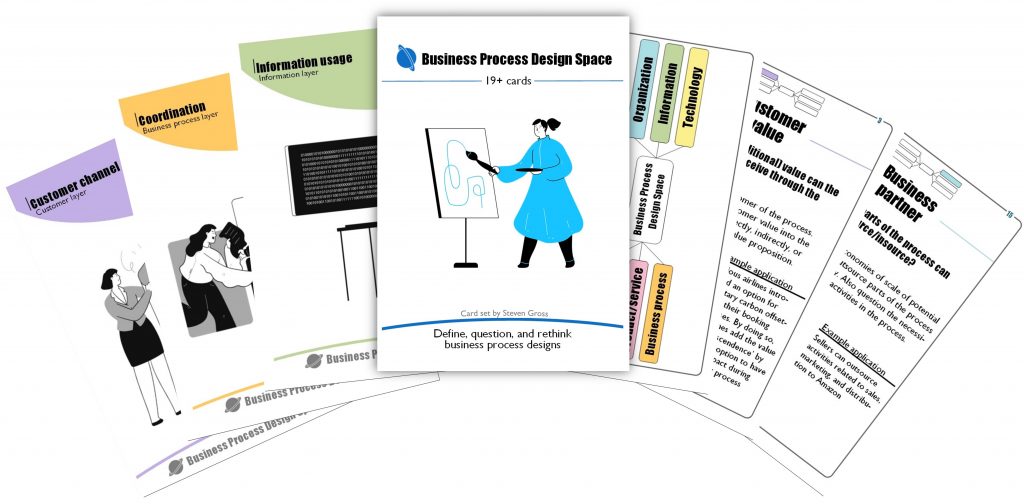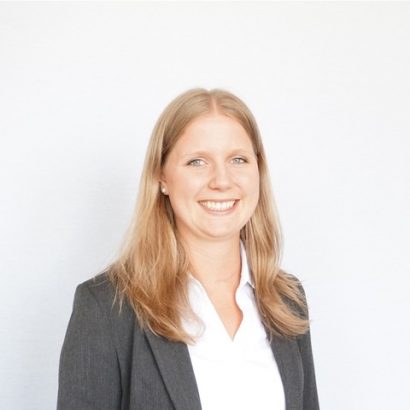Explorative Business Process Management
Business Process Management (BPM) is an important management approach. Research and practice show that BPM increases efficiency and effectiveness of organizational work. However, it may limit a firm’s ability to explore new innovation opportunities. We face a key question in today’s dynamic times: How can BPM enable the exploration of innovation opportunities? This website presents our latest research on explorative BPM. We introduce studies, methods, and tools to systematically integrate innovation opportunities into business process work.
In our research, we developed two approaches to enable explorative BPM activities in organizations.
First, we designed the Five-Diamond-Method. This framework assists organizations in aligning the organization’s purpose with emerging business and technology opportunities in order to design new business processes. Second, we developed the Business Process Design Space. This model enables the systematic exploration of business process re-design alternatives, which enable organizations to define and leverage innovation opportunities. We also developed a curriculum to teach these methods to university students, academics and practitioners in various industries.
This research has been co-funded by the Erasmus+ programme of the European Union (“Reference Module Design for Explorative Business Process Management”). It reflects joint research activities by the University of Liechtenstein, Vienna University of Economics and Business and the University of Bayreuth.
The Five-Diamond-Method
‘If opportunity doesn’t knock, build a door.’ (Milton Berle). Identifying innovation opportunities is key for organizations. Identifying them can be complex and challenging, given that opportunities arise from both business environments and technological innovations.
BPM has traditionally been exploitative. It applied an inside-out-logic to the improvement of business processes, aiming to reactively change existing business processes. In order to realize explorative BPM, we need to apply an outside-in logic. This implies that we systematically explore innovation opportunities and integrate them into the business process work. This leads to new processes, services and business revenue models.
Our Five-Diamond-Method is an explorative BPM method that assists organizations in identifying opportunities arising from business environments and digital technologies – and in integrating them into new business processes. Our method builds on the idea of divergent and convergent thinking, which is reflected in the diamond shape of this model. Besides the overarching diamond, it contains four smaller diamonds that reflect crucial dimensions of innovation. One diamond refers to purpose (to define the underlying purpose of the organization), one to business (to explore relevant business trends), one to technology (to explore relevant technology trends), and one to integration (to create ideas for new business processes to create new value propositions).
We have tested and evaluated the Five-Diamond-Method in university lectures as well as with organizations.
The Business Process Design Space
We are prone to biases and get used to the status quo. When we want to come up with new ideas, we are largely influenced by what we know from past experiences. When we think about business process redesign alternatives, we may consciously consider some aspects, while others can be unconsciously left out of design decisions.
We make use of the design space concept to overcome this bias. A design space can be used to systematically explore design alternatives. To provide structure to this space, design dimensions can be used that capture different design choices. A design dimension for a table as a design artifact, for instance, can be its material. Possible design choices within this dimension are then glass or wood. But we can also find more uncommon alternatives, like rubber or marble.
In our research, we developed the Business Process Design Space (BPD-Space) by deriving 19 design dimensions that are relevant for business processes. For instance, one design dimension is the ‘trigger’ of a process, i.e. how the process is initiated. The guiding question is, ‘What/Who starts the process?’ and potential characteristics can be message events (e.g. order is received), but also temporal events (e.g. every Friday morning), conditional events (a business rule is met), or signal events (a process starts another process).
The BPD-Space is explorative. It abstracts from specific process flows and representations of processes (e.g. BPMN) and enables an unconstrained exploration of various alternative process designs.
Find the research paper here (open access): https://www.emerald.com/insight/content/doi/10.1108/BPMJ-03-2020-0116/full/html
The BPD-Space Card Set

This set of cards brings the Business Process Design Space into action! Instructions, guiding questions, illustrations, and real-world examples support participants to explore new process designs. The 19 design dimensions are supported by newly developed ‘extra cards’. Using the BPD-Space has never been this easy - get your card set today and use it in your classroom to teach explorative process redesign and BPM!
The BPD-Space is used and taught at:
- Vienna University of Economics and Business (Austria)
- University of Liechtenstein (Liechtenstein)
- University of Bayreuth (Germany)
- Humboldt University of Berlin (Germany)
- University of Cologne (Germany)
- Institut Teknologi Sepuluh Nopember Surabaya (Indonesia)
Curriculum
We have developed a curriculum to teach explorative BPM to university students and executives. Following the Five-Diamond Method, the curriculum explores various potentials for innovation. It addresses aspects related to business model innovation as well as digital technologies and draws on the latest research on innovation management and digital innovation.
We are in the final stages of evaluating our curriculum. You will be able to download all materials here for free in early 2021.
Handbook for Course on Explorative BPM
Lecture 3_Innovation Management
Lecture 4_Purpose and Business
Lecture 5_Digital Technologies 1
Lecture 6_Digital Technologies 2
Lecture 7_Integration and Process Design







